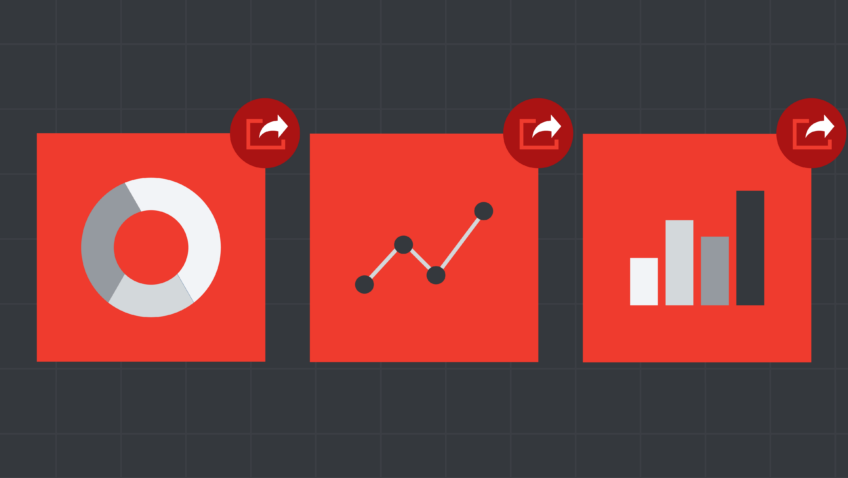User-Centric Design: The Homepage
When we analyze Google Analytics (GA) client data at Capacity Interactive, two themes relating to the homepage commonly recur. Chances are, if you were to look at your own data, you’d see something very similar:
Most Users Enter Outside of the Homepage
This shouldn’t come as a surprise to most readers – this behavior has been taking place for years. Think of how you get to websites – you click on a link in an article you’re reading, a Facebook ad, or in a newsletter. Or, even more likely, you go to Google, search for what you want, and then click on the link to get to the site.
The commonality in most of these scenarios is that the links drive you to a specific landing page that is more relevant to you than just the homepage. This is very intentional. We link users to appropriate landing pages because we know we’d lose some users if we drove them to the homepage, then asked them to find the content and navigate to it (Google does the same thing when the site is properly indexed with SEO).
You have to design deeper pages on your website to serve as landing page.
The big impact is on user experience, which again shouldn’t be too shocking: You have to design deeper pages on your website to serve as landing pages. A good way to measure your landing pages is your bounce rate – go to the All Pages report in the Behavior section of GA and compare your bounce rate for the homepage vs. other pages (particularly those with many entries). If the variance is very steep, you likely should be thinking about optimizing your landing pages.
GA All Pages Report Filtering Out Homepage Data
Most Users Will Not Navigate to the Homepage
This one is related to the previous item and, in my opinion, is more interesting in its implications. If we know that most users, say two thirds, enter outside the homepage, we can measure how likely those users are to navigate to the homepage on their own. This data point isn’t automatically exposed in GA, but it can be calculated fairly easily using the All Pages report in GA:
HP Navigation Rate = (HP Unique Pageviews – HP Entrances) / (Site Sessions – HP Entrances)
My guess is that your HP Navigation Rate is around 5%, meaning that virtually none of the users that enter deeper on the site will see the homepage (again, most users will enter deeper, so this is a very sizable segment).
Navigating back to the homepage would be more of an indicator that the landing page didn’t have the content the users wanted or an intuitive next step.
The implications are what makes this so exciting! But, we must first begin with a question: Do we even want those users to see the homepage? Is navigating to the homepage a good thing?
My response in most scenarios is a resounding no. If someone enters on the production detail page or on the visiting hours page, I want them to begin purchasing tickets or to navigate to the directions page, not to the homepage. Navigating back to the homepage would be more of an indicator that the landing page didn’t have the content the users wanted or an intuitive next step. The user is essentially “resetting” the visit by just clicking on the logo in the top left corner and starting from scratch on the homepage.
The Role of the Homepage
So we want the HP Navigation Rate to be low and it most likely already is, so we don’t have a problem, right? Not quite. Let’s take a step back and think about the role of the homepage – what’s its typical job? Usually, in addition to functioning as a bit of a directory for the site, it’s also where we drive awareness for upcoming events, have branded content about our organization and community initiatives, and where we have inspirational content and imagery (we’re selling arts and cultural experiences, not books or sneakers).
It’s totally fine if users don’t see the homepage, but they must see the promotional, branded, and inspirational content. The big takeaway from this data is the need to expose this content across the entire site – it cannot solely live on the homepage or roughly two-thirds of your site visitors will never see it. This isn’t necessarily easy to execute, but it likely should be a big part of the conversation about your user experience (UX).
Users need to see promotional, branded, and inspirational content across the entire site. It cannot solely live on the homepage or roughly two-thirds of your site visitors will never see it.
Going Beyond the GA Basics
This is where GA shifts from being about tags or reports, things that are often considered as boring and treated as obligations, to being about insights and action. As you can see, it doesn’t require a masters in statistics or a data scientist title. The math is the easy part. The much more difficult part involves asking the right questions and then in taking action on the findings.
Google Analytics is meant to help make us better designers, content creators, marketers, and strategists. It lets us ask critical questions and then helps us find the best data to formulate hypotheses, all so we can improve the UX and performance of the website.
This is an example of what should drive a good analyst and an example of what the Analytics team at CI gets very nerdishly excited about. Google Analytics isn’t meant just to create reports that show you month over month performance (although even just that is still very powerful!). It’s meant to help make us better designers, content creators, marketers, and strategists. It’s there to let us ask critical questions and then find the best data to help us formulate hypotheses, all so we can improve the UX and performance of the website.
I encourage you to look at your own data in relation to these two aspects of the homepage – it should take you less than 10 minutes. The CI Analytics team can help you utilize the power of Google Analytics to make informed user experience decisions and improve the performance of your website. Not sure if your GA account is set up to help you make these decisions? Schedule a free assessment today.











